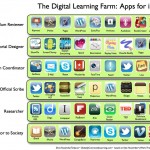The Benefits of Using Geospatial Data in Analytics
Data becomes money when technology becomes the language we speak that is collected and circulated regularly.
We can track people’s locations and identify places with the touch of a button thanks to GPS and cell towers, and geospatial data is assisting us even more across numerous industries.
The geospatial data sector is currently valued at $4 billion and is likely to increase in the future as more companies integrate technology and data into their operations.
Any data on people, things, or phenomena on the earth’s surface is considered geospatial data. It may be anything from hurricane-affected areas to data on people living in poverty in a certain region over time.
This data compiles information, such as coordinates and information to back up the data.
It has shown to be advantageous in a variety of industries over time and is now employed in a variety of settings.
Here we discussed some spots where data always proved beneficial:
1. Communication
GIS data is useful for bridging communication gaps in a variety of ways. One example is the telecommunications industry, which is using GIS to identify untapped markets and solve communication issues in remote places. Second, businesses use GIS data to locate points of interest and markets in which they might expand. GIS is also used by national security organizations, armies, and governments to communicate and exchange information.
2. Humanitarian Assistance
GIS data can be used to identify places where changes can be made to improve living conditions, living standards, or even spaces where basic facilities are lacking. With the use of GIS data, problems like poverty, hunger, and sanitation may be recognized and a strategy for solving them developed. GIS has been utilized widely in the food security sector to assist farmers in increasing output and optimizing land use.
3. First Response
GIS has supplied respondents with proven facts to back up their decisions in times of crises and calamities. GIS data helps in the creation of contingency plans and the anticipation of any barriers that a rescue team might face in the event of an emergency. GIS data has been a usual fallback for government agencies and organizations to help people in improving circumstances during natural disasters, fires, and terrorist acts.
4. Cost-Cutting
GIS data helps in the improvement of productivity. GIS data brought efficiency across sectors by minimizing waste, eliminating overlapping, and so saving expenses. This can be in the form of geography, clearly planned for the work of workers, or best divided by the production cycle of the plant. Companies have developed new means of optimizing location data and creating routes that are the least time and fuel consumption in transportation, lowering expenses.
This can be in the form of geography, clearly planned for the work of workers, or best divided by the production cycle of the plant.
5. Helpful in Decision Making
This usually has to do with making better location decisions. Common examples include real estate site selection, path/corridor selection, zoning, planning, conservation, natural resource extraction, etc. People are starting to realize that making the right decision about a position is strategic to the success of an organization. So for those who are wondering what the use of geospatial data is, this is the main reason to have a GIS system around us. It helps in management, improves government decisions and collaborates with the cloud as soon as possible, and also makes the system transparent for citizen engagement.
Bottom Line
GIS is only getting started on its path to being a support system for other industries; it’s growing and has a bright future ahead.















